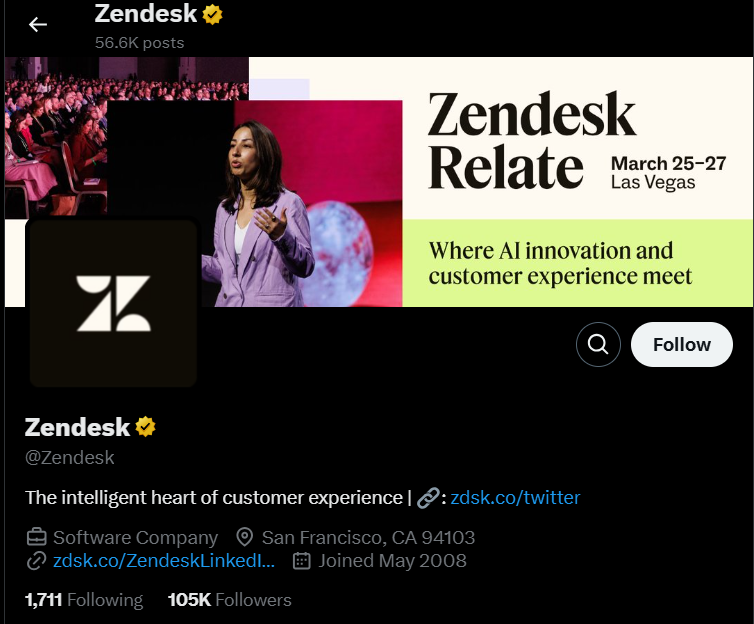Imagine this: A local bakery, has been diligently posting on social media, showcasing their mouthwatering treats and engaging with customers online. However, despite their efforts, they’re not seeing the results they hoped for. Sound familiar?
In the fast-paced world of digital marketing, it’s easy for businesses to get lost in the noise of social media. That’s when the need for a social media audit arises. It’s not just a routine check-up; it’s a powerful diagnostic tool that can transform your client’s online presence and elevate their business to new heights.
In this blog post, we’re about to embark on a journey together – a journey that will empower you to unlock the full potential of your client’s social media presence. Get ready as we delve into the art of performing a comprehensive social media audit, decoding valuable insights, and crafting tailored strategies to skyrocket your client’s brand visibility and engagement.
Let’s dive in!
Why is a Social Media Audit Necessary?
Before delving into the nitty-gritty of carrying out a social media audit, it’s essential to understand why it matters.
A social media audit enables you to:
1. Evaluate Performance
Assess your client’s current social media performance, including engagement metrics, follower growth, and content effectiveness.
Reason: Analyzing metrics (likes, comments, shares) is crucial for understanding audience interactions on your client’s social media platforms. Thanks to social media audit, you can gain insights into your client’s engagement levels and identify opportunities for improvement.
2. Identify Opportunities
Pinpoint areas where your client’s social media can be optimized to better align with their business objectives.
Reasons: Businesses that actively engage with their audience on social media are more likely to build brand loyalty. Through the power of a social media audit, you can identify gaps in your client’s customer engagement strategies and develop tailored solutions to enhance their business’s online presence.
3. Enhance Strategy:
Develop data-driven strategies to maximize your client’s social media Return on Investment (ROI) and achieve their marketing goals.
Reasons: Businesses that leverage social media analytics to inform their content strategy are more successful in reaching their target audience. By performing a comprehensive social media audit, you can gather valuable data on your client’s audience demographics, content preferences, and engagement patterns. This will allow you to tailor your strategies for maximum impact.
By understanding the importance of a social media audit and leveraging data-driven insights, you can optimize your client’s social media presence, drive engagement, and achieve tangible results for them.

Step-by-Step Guide to Conducting a Social Media Audit
An impressive 89% of marketers use social media and for a good reason. A critical part of running successful social media campaigns is performing periodic social media audits. Most brands perform quarterly or half-yearly audits for their social media.
Follow this step-by-step process to perform your client’s social media audit.
Step 1: Define Objectives and Goals
Before diving into the audit process, it’s crucial to understand your client’s objectives and goals for social media.
For example, if your client is a local bakery aiming to increase foot traffic to their storefront, their primary objective may be to boost brand awareness and engagement within the local community.
On the other hand, if your client wants more sales, you would need to target people who already know about the brand and are ready to buy. Your client would then need to focus on the bottom-of-the-funnel content.
Listed below are more examples of goals:
- Grow website traffic
- Generate more leads
- Discover new insights about the audience
- Boost brand awareness
- Build an engaged community
Use the SMART framework to make sure your goals are realistic and achievable within a set timeframe.
Step 2: Gather and Analyze Data
Next, start by collecting comprehensive data on your client’s social media accounts. For instance, if their business operates across multiple platforms like Facebook, Instagram, and Twitter, gather metrics such as follower counts, engagement rates, and post frequency for each platform.
Here’s an example of the type of data you might collect:
- Facebook: Total page likes, post reach, engagement analytics (likes, comments, shares)
- Instagram: Follower count, engagement rate, top-performing posts
- Twitter: Followers, tweet impressions, retweets, and like counts
Step 3: Assess Profile Information
Don’t forget to evaluate the completeness and consistency of your client’s social media profiles. Take a look at their bio, profile picture, and contact details.
For example, if your client’s Instagram bio is missing essential information like their location or business hours, it may hinder their ability to attract and inform potential customers.
Take a look at Zendesk’s Twitter profile. It’s a great example of complete and consistent information presented in the company’s bio:

Step 4: Analyze Content Strategy
It’s also important to review the content shared across your client’s social media channels. Analyze the quality, relevance, and consistency of their posts.
For a fashion retailer client, let’s say you would assess whether their Instagram feed showcases a diverse range of products, lifestyle shots, and user-generated content that resonates with their target audience.
Step 5: Identify Best-Performing Content
Sometimes, you don’t have to reinvent the wheel entirely. You just need to double down on what’s already working great for you. To discover top-performing content, dive into the engagement statistics of your client’s social media accounts. Look at metrics such as likes, comments, shares, saves, and click-through rates.
For example, if your client’s Facebook page has a high engagement rate on posts featuring customer testimonials, consider incorporating more user-generated content into your content strategy.
Step 6: Examine Audience Insights
Utilize audience insights tools provided by social media platforms to gain a deeper understanding of your client’s target audience. Identify demographic information, interests, and behaviors to inform your content strategy and targeting.
For instance, if your client’s Twitter followers are primarily young professionals interested in technology, tailor your content to align with their preferences and interests.
Step 7: Competitor Analysis
Conducting a competitor analysis is necessary to benchmark your client’s social media performance against their industry peers. Identify key competitors and analyze their social media presence, content strategy, and engagement levels.
For example, if your client has a boutique fitness studio, analyze competitor Instagram accounts to identify trends, content themes, and engagement strategies that resonate with a similar audience.
Step 8: Assess Consistency in Branding
In order to improve your client’s brand recall value, it’s important to check the consistency of their branding elements across all social media channels. Review aspects such as brand colors, fonts, imagery style, and tone of voice.
Ensure that branding elements are uniform and aligned with the brand identity guidelines. Inconsistencies in branding may dilute brand recognition and impact the overall brand perception.
On that note, how beautifully consistent does Tiffany & Co.’s Instagram look?

Step 9: Perform a Sentiment Analysis
Analyze the sentiment surrounding your client’s brand on social media platforms.
Use sentiment analysis tools or manually review comments, mentions, and reviews to understand the prevailing sentiment – positive, negative, or neutral. Identify themes or issues driving sentiment and formulate strategies to address any negative sentiment or capitalize on positive sentiment.
Step 10: Measure the ROI of Social Media Channels
Evaluate the ROI of each social media channel based on predefined metrics and KPIs. Track metrics such as conversion rates, lead generation, website traffic, and sales attributed to social media efforts. Compare the performance of different channels to identify high-performing channels and allocate resources effectively.
Here’s a simple formula you can use to calculate your client’s social media ROI:
(Profit/Investment)*100 = ROI
When it comes to calculating the total investment, consider these elements:
- Tools invested in social media management, social media audit, and social media intelligence
- Paid ads
- Content outsourcing (cost of hiring writers, designers, content managers, and editors)
- Time dedicated to social media marketing efforts
According to a September 2023 survey reported by Statista, 29% of B2C and B2B marketers worldwide revealed that Instagram and Facebook provided the highest ROI amongst all social media platforms. YouTube and TikTok were ranked third and fourth, respectively.
So, you’re done with the social media audit. What comes next?
Developing Actionable Recommendations
Based on your findings from the social media audit, develop actionable recommendations to enhance your client’s social media presence.
Focus on areas where improvements can be made, such as:
- Content Strategy Optimization: Tailor content to better resonate with the target audience and align with the client’s objectives.
- Engagement Enhancement: Implement strategies, such as contests, polls, and user-generated content campaigns, to encourage meaningful interactions with followers.
- Profile Optimization: Optimize social media profiles for maximum visibility and engagement, including keyword optimization and strategic use of hashtags.
- Performance Tracking: Establish key performance indicators (KPIs) to track progress over time and measure the success of implemented strategies.
Conclusion
A social media audit is a valuable tool for evaluating your client’s social media presence. It helps identify areas for improvement and develop actionable strategies to enhance online visibility and engagement.
By following the steps outlined in this guide, you can conduct a comprehensive audit that lays the foundation for success in the ever-evolving landscape of social media marketing.
Are you ready to take your clients’ social media to new heights? Start by conducting a thorough social media audit and watch as your efforts translate into incredible results for their business and yours.
Try Predis.ai to revolutionize your client’s social media presence using artificial intelligence! You can opt for a live demo to get a better idea.
















